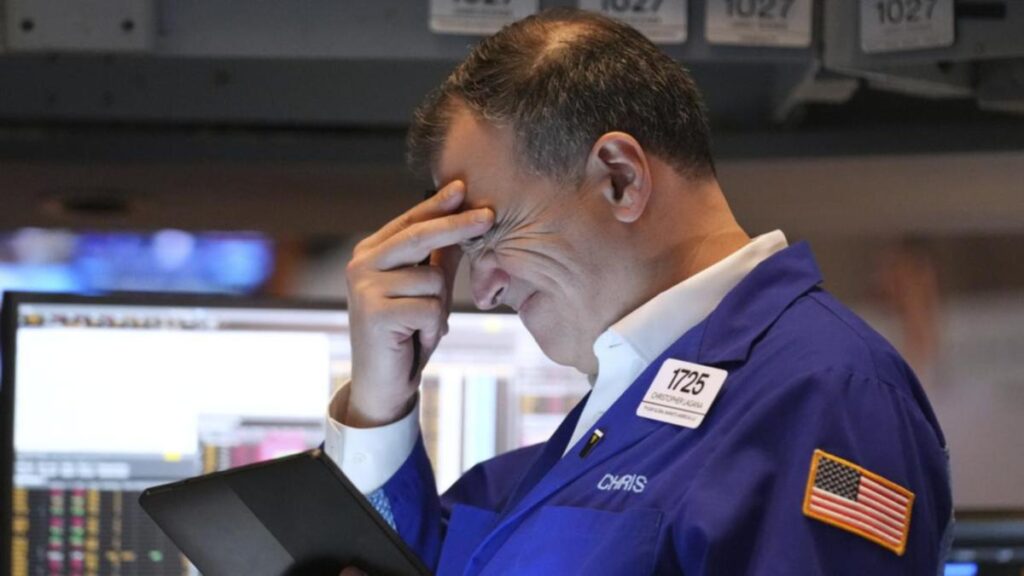The S&P 500 and the Nasdaq have hit more than six-month lows as investors steered clear of risk-laden assets on worries over the Trump administration’s upcoming announcement of extensive tariff plans.
Global stocks tumbled, gold prices scaled new highs and US government bonds climbed on Monday after US President Donald Trump said on Sunday that reciprocal tariffs he is set to announce this week will include all nations.
The utilities sector, often traded as a bond proxy, rose one per cent.
US stock markets have succumbed to sharp selling pressure this year after the Trump administration’s tariff policies raised fears of a global economic slowdown and a spike in inflation.
“Quite a lot negativity has been priced in, but markets are bracing for the worst to come,” said Daniela Hathorn, senior market analyst at Capital.com.
“The messaging around tariffs softening seems highly unlikely, given Trump’s comments over the weekend.”
The three major US indexes are on track for substantial monthly and quarterly declines, with the S&P 500 and the tech-centric Nasdaq poised for their steepest quarterly drops in nearly three years.
The blue-chip Dow index is just two per cent shy of confirming a correction, or a 10 per cent per cent from its peak. Earlier this month, both the S&P 500 and the Nasdaq entered correction territory.
In early trading on Monday the Dow Jones Industrial Average fell 393.09 points, or 0.94 per cent, to 41,190.81, the S&P 500 lost 81.90 points, or 1.47 per cent, to 5,499.04, and the Nasdaq Composite lost 409.48 points, or 2.36 per cent, to 16,913.52.
The domestically focused Russell 2000 index was down 2.4 per cent.
Tech stocks bore the brunt of Monday’s selloff. Nvidia fell 5.3 per cent, while Microsoft slid 12.6 per cent.
Tesla fell seven per cent. Stifel lowered the company’s delivery forecast ahead of Wednesday’s announcement, weighing on the broader consumer discretionary sector.
The CBOE Volatility index, Wall Street’s so-called fear gauge, surged to a near three-week high of 24.79 points.
As a result of tariff uncertainties, Goldman Sachs raised the probability of a US recession to 35 per cent from 20 per cent, cut its year-end target for the S&P 500 and forecast more rate cuts by the Federal Reserve.
The focus this week will also be on economic data including ISM business activity surveys and the crucial non-farm payrolls report. Also due this week are speeches from several US central bank officials including Fed Chair Jerome Powell.
Drugmakers’ shares slid after reports that the US Food and Drug Administration’s top vaccine official had been forced to resign. Moderna dropped 13 per cent, while Pfizer fell 2.2 per cent.
Gene therapy companies Taysha Gene Therapies and Solid Biosciences fell 18.6 per cent and 15.2 per cent, respectively, with US-listed shares of CRISPR Therapeutics down 9.7 per cent.
Declining issues outnumbered advancers for a 3.23-to-1 ratio on the NYSE and a 4.43-to-1 ratio on the Nasdaq.
The S&P 500 posted 20 new 52-week highs and 41 new lows, while the Nasdaq Composite recorded 17 new highs and 385 new lows.
https://thewest.com.au/business/markets/six-month-lows-on-wall-st-tariffs-spark-recession-fear-c-18222826


